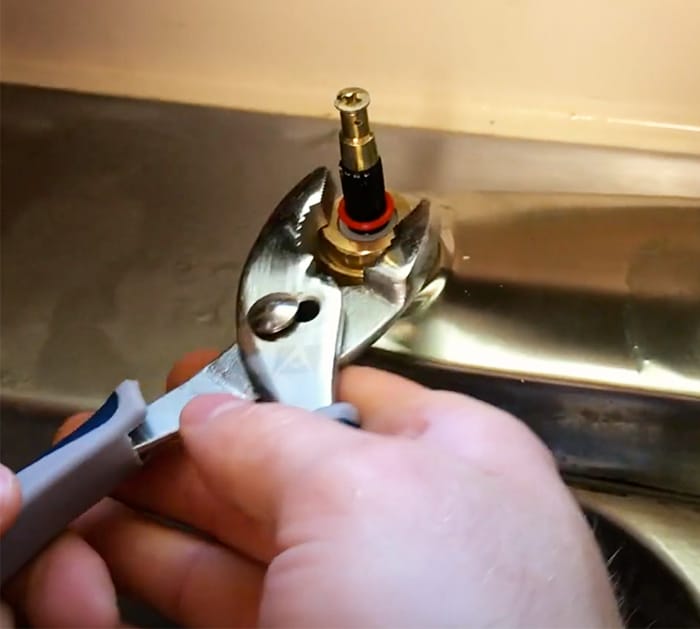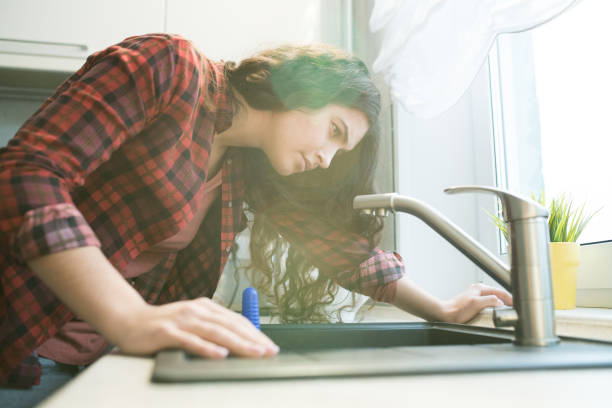Understanding the Importance of Repairing a Faulty Faucet
Understanding the Importance of Repairing a Faulty Faucet
Blog Article
Just how do you actually feel with regards to Leaky Faucets: Why They Happen & What to Do About Them?

Leaking taps may seem like a minor trouble, but their influence goes beyond just the inconvenience of the noise. From drainage to incurring unnecessary economic prices and health and wellness dangers, overlooking a trickling tap can cause numerous consequences. In this article, we'll look into why it's essential to resolve this typical family problem promptly and efficiently.
Waste of Water
Ecological Effect
Dripping faucets contribute substantially to water waste. According to the Environmental Protection Agency (EPA), a solitary tap trickling at one drip per secondly can waste greater than 3,000 gallons of water annually. This not just stress water sources yet likewise influences environments and wild animals dependent on them.
Financial Costs
Raised Water Bills
Beyond the ecological effect, trickling taps can blow up water expenses significantly. The built up wastage in time translates into greater utility expenses, which might have been stayed clear of with prompt repair services.
Possible Residential Property Damages
Additionally, long term trickling can cause harm to components and surface areas bordering the faucet. Water accumulation can cause staining, deterioration, and also structural problems if left unattended, resulting in added repair work costs.
Health and wellness Problems
Mold and Mold Development
The continuous visibility of dampness from a trickling tap produces a perfect setting for mold and mildew and mildew development. These fungis not just jeopardize interior air high quality yet additionally pose health risks, specifically for individuals with breathing problems or allergies.
Waterborne Illness
Stationary water in trickling faucets can become a breeding ground for germs and other microorganisms, increasing the risk of waterborne diseases. Contaminants such as Legionella bacteria thrive in stagnant water, potentially bring about serious illnesses when ingested or breathed in.
Do it yourself vs. Professional Repair work
Pros and Cons of Do It Yourself Fixing
While some may attempt to repair a dripping faucet themselves, DIY repairs feature their very own collection of obstacles. Without proper knowledge and devices, do it yourself efforts can intensify the problem or cause insufficient fixings, prolonging the issue.
Benefits of Working With a Professional Plumber
Working with a specialist plumber ensures that the underlying reason for the dripping faucet is dealt with successfully. Plumbers have the knowledge and devices to detect and fix tap concerns successfully, saving time and decreasing the danger of more damages.
Step-by-Step Overview to Taking Care Of a Dripping Tap
Tools Needed
Before attempting to deal with a trickling tap, gather the necessary devices, consisting of an adjustable wrench, screwdrivers, replacement parts (such as washing machines or cartridges), and plumber's tape.
Usual Faucet Issues and Their Solutions
Identify the type of tap and the certain problem causing the drip. Common troubles consist of worn-out washing machines, rusty valve seats, or faulty O-rings. Describe producer instructions or online tutorials for detailed assistance on repairs.
Safety nets
Routine Maintenance Tips
To stop leaking taps, do routine upkeep such as cleaning up aerators, inspecting for leakages, and replacing damaged parts without delay. Furthermore, consider mounting water-saving gadgets or updating to much more reliable fixtures.
Importance of Prompt Fixes
Dealing with trickling faucets as quickly as they're discovered protects against additional water wastefulness and potential damages, inevitably saving both water and cash over time.
Influence On Residential Property Value
Understanding of Well-Maintained Residential Or Commercial Property
Preserving a residential or commercial property in good condition, consisting of attending to upkeep problems like trickling faucets, improves its regarded worth and desirability among possible customers or renters.
Impact on Resale Value
Features with well-kept plumbing fixtures, consisting of faucets, command higher resale worths in the real estate market. Dealing with leaking taps can add to a positive impression during residential or commercial property examinations and arrangements.
Ecological Responsibility
Individual Payment to Conservation
Taking obligation for repairing dripping faucets lines up with wider initiatives towards water conservation and ecological sustainability. Every person's actions collectively make a considerable effect on preserving precious resources.
Lasting Living Practices
By focusing on punctual fixings and taking on water-saving behaviors, people add to sustainable living practices that benefit both present and future generations.
Verdict
Addressing a leaking tap surpasses mere convenience; it's a necessary step toward saving water, minimizing monetary expenses, and protecting health and residential or commercial property. Whether through do it yourself repair work or professional assistance, taking action to deal with leaking faucets is a small yet impactful means to advertise accountable stewardship of resources and add to a much healthier, much more sustainable future.
How to Fix a Dripping or Leaky Faucet
A leaking faucet is one of the most common problems that homeowners encounter, but it being commonplace doesn’t make it any less annoying. The constant drip drip drip of a leaking bathtub faucet, showerhead, or sink tap can disturb your home’s serenity. Left neglected, a dripping faucet can also result in higher water bills and discoloration or mold growth in your sink or plumbing fixtures.
Fortunately, you don’t have to be a trained plumber to know how to stop a dripping faucet. With some basic tools, replacement parts, and a little patience, leaky faucet repair is a breeze. In this article, we’ll explain what causes dripping faucets and how you can fix them.
What Causes a Leaking Faucet?
Kitchen and bathroom faucets come in all manner of designs, but most involve some combination of valves, O-rings, seals, and washers. The O-ring is usually the weakest link, but any one of these pieces can wear down over time. Heat, moisture, temperature fluctuations, minerals, mold, and movement can contribute to warping and corrosion, breaking the watertight seal. This just comes with the territory of being a homeowner. Everything is always subject to wear and tear, and some component parts of your appliances and fixtures need to be replaced on occasion. At least replacement O-rings are cheap!
More rarely, dripping faucets can be a symptom of excessively high water pressure. Were this the case in your home, you would probably notice that the leak is not isolated to one faucet. Water pressure issues are harder to resolve on your own. We recommend contacting a professional plumber if you suspect your water pressure is too high.
How to Fix a Dripping Faucet
Pipe wrench or monkey wrench Allen wrench set Screwdrivers Old towel or rag Shut off the water.
Before you do anything, you need to turn off the water to keep from drenching your kitchen or bathroom. You should find a valve under the sink and against the wall. Once you’ve turned this valve, try turning the faucet on to confirm that the water source has been cut off.
If you can’t locate your local valve for the faucet you’re working on, you can always shut off the water to the house at the main valve. Of course, this will prohibit anyone from using the sinks, showers, or toilets while you’re working on the faucet that’s giving you trouble.
Plug or block the drain.
You’ll be disassembling the faucet and removing some small bits of hardware. Plug the drain with a stopper or rag to avoid the possibility of a small screw falling into your P-trap.
Take apart the faucet assembly.
There are several varieties of kitchen and bathroom faucets, each with its own manner of assembly. For detailed instructions on how to disassemble your faucet, you can refer to the fixture’s manual or contact the manufacturer. If you know whether you have a ball, disc, cartridge, or compression faucet, you can find detailed schematics online.
In general, you need to begin by removing the faucet handles. You might notice a small screw that you’ll need to remove with a screwdriver or Allen wrench. If you don’t see any visible securing hardware, it’s likely hidden under a decorative cap that can be unscrewed or popped off with flathead screwdriver.
Remove each piece methodically, consulting a schematic when necessary. Take notes or arrange the pieces in such a way to make it easier to correctly reassemble the faucet later.
Remove the cartridge.
Once you’ve removed the handles and securing hardware, you should be able to remove the valve cartridge or stem. Some cartridges will slide right out. Other faucet models will require you to loosen a nut with a pipe wrench before you can remove the valve stem.
Examine the exposed hardware.
With the cartridge or stem removed, inspect the component parts. Check the rubber O-rings for wear and tear. Also examine the seat washer for corrosion or other damage. These pieces are usually the responsible parties for a dripping faucet, but it’s worth inspecting the other component parts while you have the faucet disassembled.
Find replacement parts.
Once you’ve identified which faucet component has failed, find an identical replacement. Your local hardware store should have O-rings, seat washers, and other standard components in stock. If you have a luxury or uncommon faucet, you may have to contact the manufacturer for a replacement part.
It’s a good idea to take your old parts with you to the hardware store so you can compare them with the store’s inventory and be sure you’re purchasing the correct replacement.
Reassemble the faucet.
With your new parts in hand, reconstruct the faucet and handles. Don’t be tempted to overtighten screws or nuts. You might think this could create a better seal, but it can instead damage or bend a delicate part of the assembly and create a new problem for you.
Turn on the water and test the faucet.
The only thing left to do is test your work. Unplug the sink, turn the water back on, and try the faucet. Congratulate yourself on a job well done!
https://www.libertyhomeguard.com/how-to-fix-a-dripping-or-leaky-faucet/

Hopefully you enjoyed our part about What Causes Leaky Faucets & How To Fix Them. Many thanks for taking the time to read through our blog post. Please take the time to promote this article if you enjoyed it. Thank-you for your time invested reading it.
Report this page